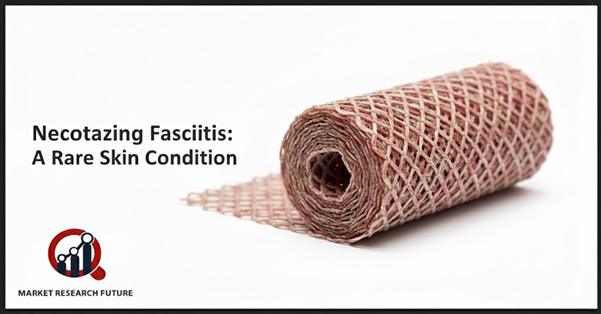Necrotizing Fasciitis Diagnosis: It's Time to Lead With Innovation

Necrotizing fasciitis, also known as "flesh-eating disease," is an uncommon but serious bacterial illness that destroys tissues around muscles and organs. It spreads quickly through cuts or wounds and causes a lot of discomfort, redness, and fever. To avoid problems and save lives, it is important to have an early diagnosis, start antibiotics once, and use new treatments.
What is Necrotizing Fasciitis?
Necrotizing fasciitis, sometimes known as "flesh-eating disease," is a serious bacterial illness that destroys the tissues around muscles, nerves, and organs. It happens when bacteria get into the body through cuts, scrapes, or even small skin injuries. The infection spreads swiftly and can be deadly if not treated right away.
Why Does It Happen
Group A Streptococcus and Clostridium perfringens are the microorganisms that cause this most often. Group A Streptococcus usually gets in through deep cuts or open sores. C. perfringens, on the other hand, can get in through food that hasn't been cooked properly or that has been contaminated.
Methicillin-resistant Staphylococcus aureus (MRSA) can potentially cause infections, especially in surgical incisions or small cuts on the skin. These bacteria make poisons that kill nearby tissue, which speeds up the illness.
Who's In Danger?
Anyone with broken skin can get necrotizing fasciitis, even if the skin around the break looks healthy. People who have open wounds, surgical cuts, or small traumas are especially at risk. The disease spreads quickly; therefore, it's important to recognize and treat it as soon as possible to stay alive.
Signs to Look Out For
Fever, chills, acute pain surrounding a wound, red or glossy skin patches, swelling, and sometimes blisters are common symptoms that show up quickly. Infected regions may look glossy or off-color, and the redness may spread outward. Rapid symptom progression needs immediate medical treatment.
What Helps: Diagnosis and Early Detection
Doctors use tissue and blood testing to find dangerous bacteria, including MRSA, to diagnose necrotizing fasciitis. To confirm an infection, samples from wounds or nearby tissue may be tested. It is very important to find out what is wrong early so that the bacteria don't spread to other parts of the body.
New Ideas And Treatments
Antibiotics and, in severe situations, surgery to remove contaminated tissue are part of prompt therapy. Better diagnostic tools are helping doctors find problems early, which lets them take action quickly. New methods for quickly testing for germs and targeted medicines are being developed to lower the number of deaths and enhance patient outcomes.
Conclusion
Necrotizing fasciitis is uncommon yet highly perilous. Knowing the signs, taking care of wounds properly, and getting medical help right away are all very important. Doctors are better able to deal with infections because of new diagnostic tools and preventive treatment plans. This saves lives and lowers the risk of consequences from this aggressive bacterial disease.

Leave a Comment